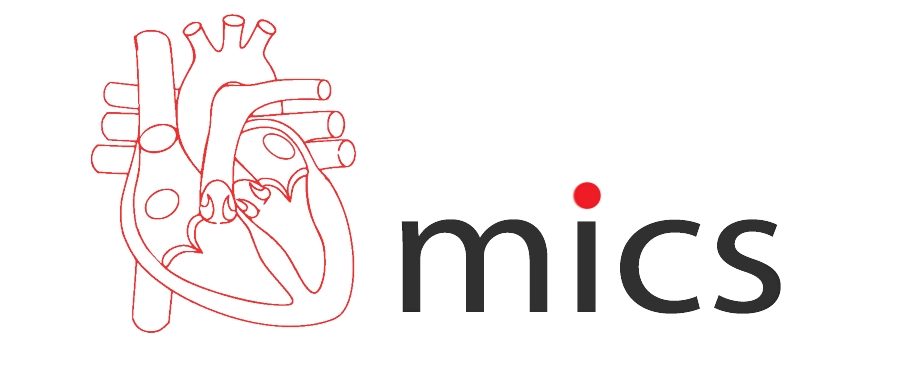Minimally Invasive Cardiac Surgery
Minimally invasive cardiac surgery is a surgical approach that utilizes advanced techniques and technologies to perform cardiac procedures with smaller incisions and less trauma to the body. This approach offers many potential benefits for patients, including reduced pain, faster recovery, and shorter hospital stays. During minimally invasive cardiac surgery, the surgeon uses specialized instruments and a small camera to perform the procedure through small incisions in the chest. This approach can be used for various cardiac procedures, including valve repair or replacement, atrial septal defect closure, and coronary artery bypass surgery. If you are considering cardiac surgery, it is important to discuss your options with your doctor to determine if minimally invasive surgery is viable.
Types of Minimally Invasive Cardiac Surgery
Several minimally invasive cardiac surgery types may be used depending on the specific condition being treated. Here are some of the most common types:
- Minimally invasive coronary artery bypass grafting (CABG): This procedure involves creating new blood vessels to bypass blocked or narrowed coronary arteries. In minimally invasive CABG, the surgeon makes small incisions in the chest and uses specialized instruments to perform the procedure without opening the sternum (breastbone).
- Minimally invasive mitral valve repair or replacement: The mitral valve regulates blood flow between the heart’s left atrium and left ventricle. In minimally invasive mitral valve repair or replacement, the surgeon uses specialized instruments and a small camera to perform the procedure through small incisions in the chest.
- Minimally invasive aortic valve replacement: The aortic valve regulates blood flow between the left ventricle and the aorta. In minimally invasive aortic valve replacement, the surgeon makes a small incision in the chest and uses specialized instruments to replace the valve without opening the sternum.
- Minimally invasive closure of atrial septal defects: An atrial septal defect (ASD) is a hole in the wall between the heart’s two upper chambers. In minimally invasive closure of ASD, the surgeon uses specialized instruments and a small camera to close the hole through small incisions in the chest.
- Hybrid procedures: Combine minimally invasive surgical techniques and catheter-based interventions. These procedures are typically used to treat complex conditions that cannot be treated with a single approach.
Minimally invasive cardiac surgery offers many benefits for patients, including reduced pain, faster recovery, and shorter hospital stays. However, not all patients are candidates for these procedures, and the decision to use a minimally invasive approach will depend on the specific condition being treated and other individual factors. If you are considering minimally invasive cardiac surgery, discussing your options with your doctor is important to determine if this approach is right for you.
Advantages of Minimally Invasive Cardiac Surgery
Minimally invasive cardiac surgery offers several advantages over traditional open-heart surgery. Here are some of the main advantages:
- Smaller incisions: Minimally invasive cardiac surgery uses smaller incisions than traditional open-heart surgery, resulting in less trauma to the body and reduced scarring.
- Reduced pain and discomfort: Because minimally invasive surgery is less invasive, it typically results in less pain and discomfort for patients.
- Faster recovery: Minimally invasive cardiac surgery typically results in faster recovery than traditional open-heart surgery. Patients may be able to return to normal activities sooner and spend less time in the hospital.
- Reduced risk of infection: Because minimally invasive surgery involves smaller incisions, there is a reduced risk of infection compared to traditional open-heart surgery.
- Reduced risk of bleeding: Because minimally invasive surgery is less invasive, there is a reduced risk of bleeding during and after the procedure.
- Improved cosmetic outcomes: Because minimally invasive surgery results in smaller incisions and less scarring, it may improve cosmetic outcomes compared to traditional open-heart surgery.
Overall, minimally invasive cardiac surgery offers several advantages for patients, including reduced pain, faster recovery, and improved cosmetic outcomes. However, not all patients are candidates for these procedures, and the decision to use a minimally invasive approach will depend on the specific condition being treated and other individual factors. If you are considering cardiac surgery, discussing your options with your doctor is important to determine if a minimally invasive approach is right for you.
Candidates for Minimally Invasive Cardiac Surgery
Not all patients are candidates for minimally invasive cardiac surgery, as the decision to use a minimally invasive approach will depend on the specific condition being treated and other individual factors.
However, potential candidates for minimally invasive cardiac surgery may include patients with certain conditions, such as mitral valve disease, atrial septal defects, and coronary artery disease. Patients who are otherwise healthy and have no significant medical conditions may also be good candidates for minimally invasive surgery.
Additionally, patients who have previously undergone open-heart surgery or have other medical conditions that may increase their risk of complications with traditional open-heart surgery may benefit from minimally invasive cardiac surgery. Ultimately, the decision to use a minimally invasive approach will depend on a thorough evaluation by a cardiac surgeon and the patient’s circumstances.
Eligibility for minimally invasive cardiac surgery
Minimally invasive cardiac surgery is used to perform heart surgeries through smaller incisions, resulting in less pain, shorter hospital stays, and quicker recovery time. To be eligible for minimally invasive cardiac surgery, several factors must be considered, including the type and severity of the heart condition, the patient’s age, overall health, and medical history.
In general, minimally invasive cardiac surgery is most appropriate for patients who require valve repair or replacement, atrial septal defect (ASD) repair, or coronary artery bypass grafting (CABG) surgery. Patients with complex heart conditions or those who require emergency surgery may not be candidates for minimally invasive techniques.
Candidates for minimally invasive cardiac surgery must also be in good overall health, with no major medical conditions that could complicate surgery or recovery. Patients who are overweight or have a smoking history or other chronic diseases may not be suitable candidates.
Suppose you are interested in minimally invasive cardiac surgery. In that case, it is essential to consult with a qualified cardiac surgeon who can evaluate your medical history and current health status and determine if you are a suitable candidate for this type of procedure. Your surgeon can discuss the benefits and risks of minimally invasive surgery and help you decide your treatment options.
Preparation for Minimally Invasive Cardiac Surgery
Preparing for minimally invasive cardiac surgery (MICS) is similar to preparing for any other surgical procedure. Patients should follow their doctor’s instructions carefully to ensure a safe and successful surgery. The preparation for MICS may include the following:
- Medical evaluation: Patients will undergo a thorough medical evaluation to assess their overall health and readiness for surgery.
- Medication review: Patients should inform their doctor of all medications they are currently taking, including over-the-counter medications and supplements. Some medications may need to be stopped or adjusted before surgery.
- Fasting: Patients may be instructed to fast for several hours before surgery to ensure an empty stomach.
- Lifestyle changes: Patients may need to make lifestyle changes such as quitting smoking, losing weight, or managing chronic conditions before surgery.
- Preoperative testing: Patients may undergo blood tests, electrocardiogram (ECG), and chest X-rays to assess their heart and lung function.
It’s essential to follow all preoperative instructions carefully to minimize the risk of complications during surgery. Patients should also discuss concerns or questions with their doctor to ensure a successful outcome.
Procedure for Minimally Invasive Cardiac Surgery
Minimally invasive cardiac surgery is used to perform heart surgeries through smaller incisions than traditional open-heart surgery. The procedure involves making small incisions in the chest, between the ribs or under the breastbone to access the heart. The surgeon then uses specialized instruments and a tiny camera to perform the surgery with greater precision and control. Advanced imaging technology allows the surgeon to see the heart more clearly during the procedure. Minimally invasive cardiac surgery can be used for various heart conditions, including valve repair or replacement, ASD repair, and CABG surgery. The benefits of this technique include less pain, smaller scars, reduced hospital stays, and faster recovery times.
Risks and Complications of Minimally Invasive Cardiac Surgery
Like any surgical procedure, minimally invasive cardiac surgery carries certain risks and potential complications. While the risks associated with minimally invasive techniques are generally lower than traditional open-heart surgery, there are still some risks to consider:
- Potential risks and complications of minimally invasive cardiac surgery include bleeding, infection, arrhythmia (irregular heartbeat), blood clots, stroke, and lung complications such as pneumonia. Heart, blood vessels, or other organ damage may occur in rare cases. Additionally, anaesthesia may have risks, such as allergic reactions or breathing difficulties.
- Patients at a higher risk of complications include those with pre-existing medical conditions such as diabetes, obesity, or heart and lung disease. Smokers and individuals with a history of blood clots or a previous stroke may also be at an increased risk.
- It is important to discuss the potential risks and benefits of minimally invasive cardiac surgery with your surgeon and ask any questions you may have. Your surgeon can provide detailed information about the risks associated with the procedure and help you make an informed decision about your treatment options.
Recovery after Minimally Invasive Cardiac Surgery
The recovery after minimally invasive cardiac surgery is typically faster and less painful than traditional open-heart surgery:
- Most patients can expect to spend a few days in the hospital after the surgery, although this can vary depending on the specific procedure performed and the patient’s overall health.
- During recovery, patients may experience some discomfort, fatigue, or difficulty breathing, but these symptoms should gradually improve over time.
- It is important to follow the surgeon’s instructions for postoperative care, which may include limiting physical activity and taking prescribed medications to prevent infection and manage pain.
- Patients must attend follow-up appointments to monitor their progress and ensure their recovery is on track.
- Depending on the procedure and recovery process, most patients can return to normal activities within a few weeks to a few months after the surgery.
Conclusion
In conclusion, minimally invasive cardiac surgery performs heart surgeries through smaller incisions than traditional open-heart surgery. This procedure offers numerous benefits, including less pain, smaller scars, reduced hospital stays, and faster recovery times. However, like any surgical procedure, there are risks and potential complications associated with minimally invasive techniques, and patients should carefully consider the potential risks and benefits before undergoing this procedure. It is important to consult with a qualified cardiac surgeon who can evaluate your medical history and current health status and determine if you are a suitable candidate for this type of procedure. Patients should also follow their surgeon’s instructions for postoperative care to ensure a smooth recovery process and attend follow-up appointments to monitor their progress. Overall, minimally invasive cardiac surgery can be a safe and effective treatment option for various heart conditions when performed by a skilled and experienced surgeon.



